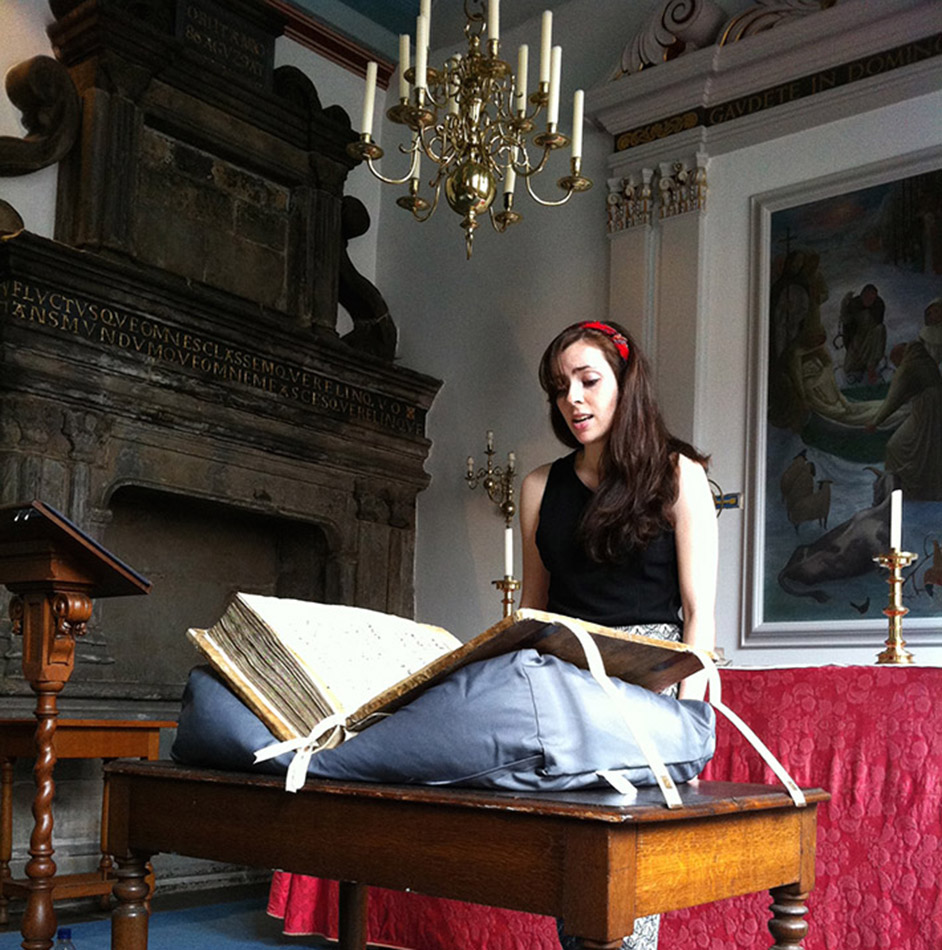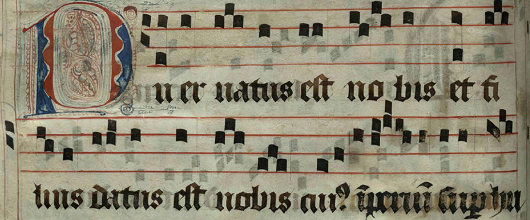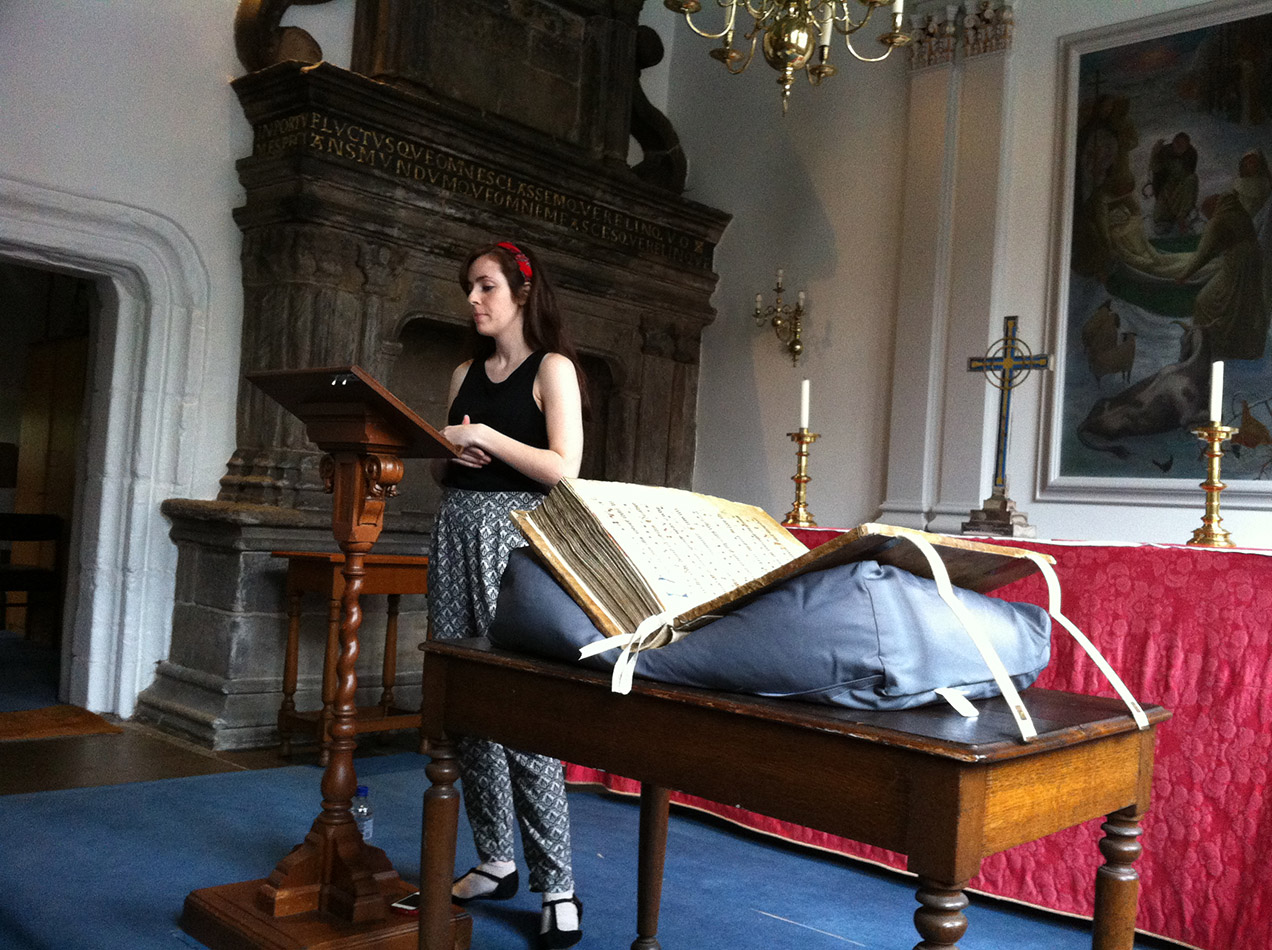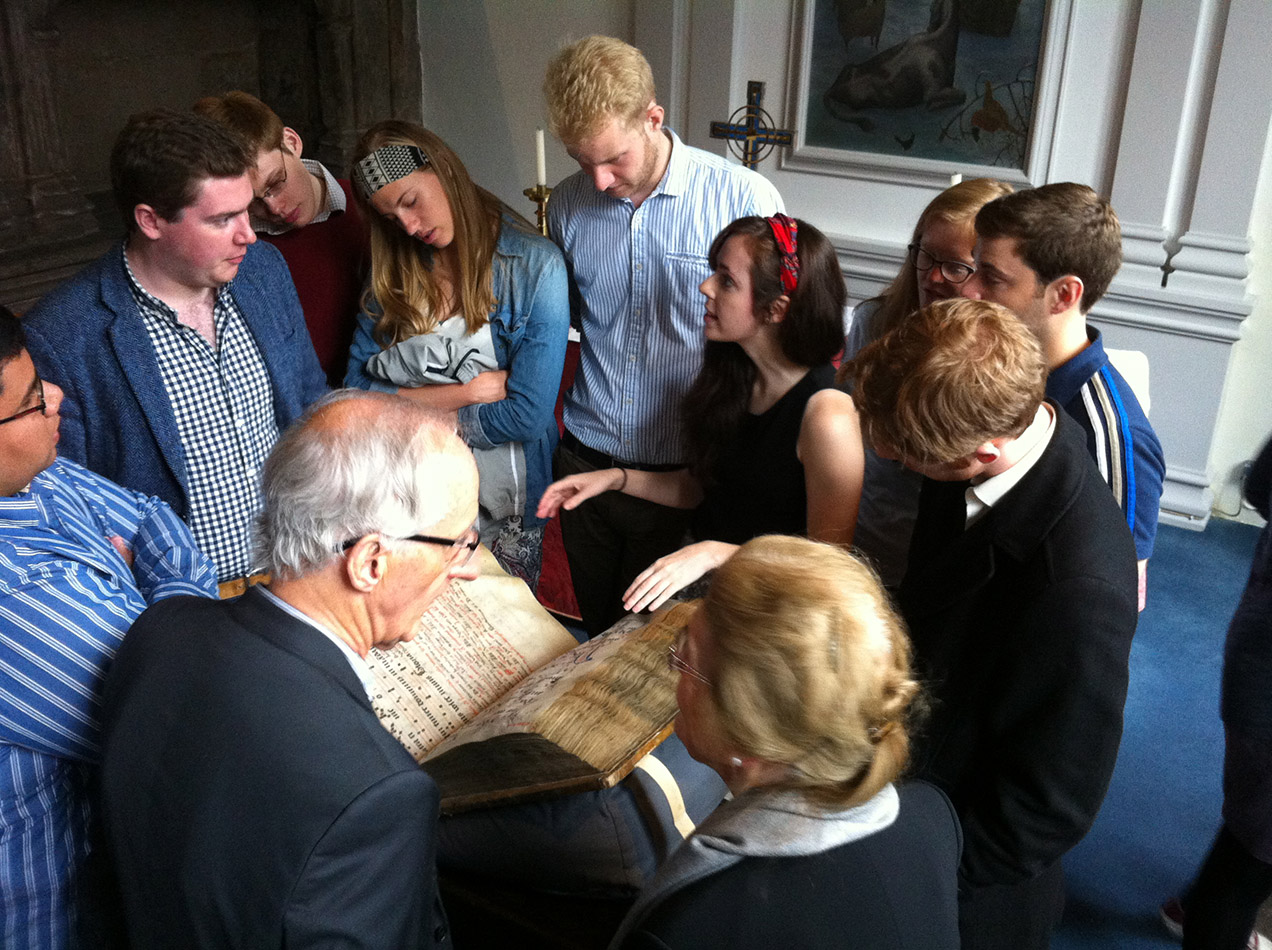Reading (or Singing) the collections, week 28: A performance from the Gradual
 Last Monday (10th August) Gillian Hurst, who is in the final stages of an MLitt in Mediaeval Studies, delighted an audience at St Leonards’ Chapel with a recital from the St Andrews Gradual. This lecture recital on performance practice and the Gradual was the final component to her MLitt thesis “A stratigraphic analysis of the St Andrews Gradual through the hermeneutical relationship between hands, initials and musical notation”. She stood behind the large volume and sang from it, turning the pages as she went, giving an authenticity to the event at which the audience heard medieval sacred music sung in a restored chapel of the medieval University. The audience was made up of Gillian’s post-grad friends from Deans Court, Friends of the University Library, and Library staff, as well as academics and visiting scholars who took the opportunity to come along in their lunch hour.
Last Monday (10th August) Gillian Hurst, who is in the final stages of an MLitt in Mediaeval Studies, delighted an audience at St Leonards’ Chapel with a recital from the St Andrews Gradual. This lecture recital on performance practice and the Gradual was the final component to her MLitt thesis “A stratigraphic analysis of the St Andrews Gradual through the hermeneutical relationship between hands, initials and musical notation”. She stood behind the large volume and sang from it, turning the pages as she went, giving an authenticity to the event at which the audience heard medieval sacred music sung in a restored chapel of the medieval University. The audience was made up of Gillian’s post-grad friends from Deans Court, Friends of the University Library, and Library staff, as well as academics and visiting scholars who took the opportunity to come along in their lunch hour.

Gillian has become very familiar with the Gradual over the past few months, visiting the Reading Room to study it in detail, after having first encountered and become fascinated by it, during source-based teaching delivered by Special Collections. She explained the background to the music to be found in the gradual, and described the content, the notation and the decoration.
 The Gradual, which is featured in week 43 of our inspiring illustrations blog, is a choir book of Gregorian plainchant, large enough for a group of choristers to gather around to sing the daily mass, divine offices and for special services in the Roman liturgical rite. This gradual (c.1400) was given to the University Library in 1894 by local MP Stephen Williamson, but we have no information on where he got it from or where it had been before that. It was very probably created in a Franciscan friary, as a number of Franciscan saints days are celebrated including St Francis, his companion Antony of Padua, St Clare of the Poor Clares, and Bonaventura. A French origin is suggested by the fleur-de-lis motif which links it with the Angevin royal house, patrons and benefactors of the Franciscan order.
The Gradual, which is featured in week 43 of our inspiring illustrations blog, is a choir book of Gregorian plainchant, large enough for a group of choristers to gather around to sing the daily mass, divine offices and for special services in the Roman liturgical rite. This gradual (c.1400) was given to the University Library in 1894 by local MP Stephen Williamson, but we have no information on where he got it from or where it had been before that. It was very probably created in a Franciscan friary, as a number of Franciscan saints days are celebrated including St Francis, his companion Antony of Padua, St Clare of the Poor Clares, and Bonaventura. A French origin is suggested by the fleur-de-lis motif which links it with the Angevin royal house, patrons and benefactors of the Franciscan order.
Gillian performed the Mass for the Dead and selections from the Mass of St Francis and the Feast of the Epiphany. It was a rare treat to hear the music from the gradual come to life. The audience were also given the opportunity to take a closer look at one of our largest manuscripts after the singing was over.
 We wish Gillian well with the examination of her dissertation of which this performance was an integral part.
We wish Gillian well with the examination of her dissertation of which this performance was an integral part.
-Rachel Hart and Sarah Rodriguez
What an inspiriting event and contribution to St Andrews scholarship. Exactly the sort of thesis that can come alive in St Andrews. Thank you for telling us all about it, and many congratulations to Ms Hurst. Julia Melvin
What a treat to see the book being used for its intended purpose, and on this site where worship has been conducted since the Middle Ages. Well done Gillian! Margaret Connolly